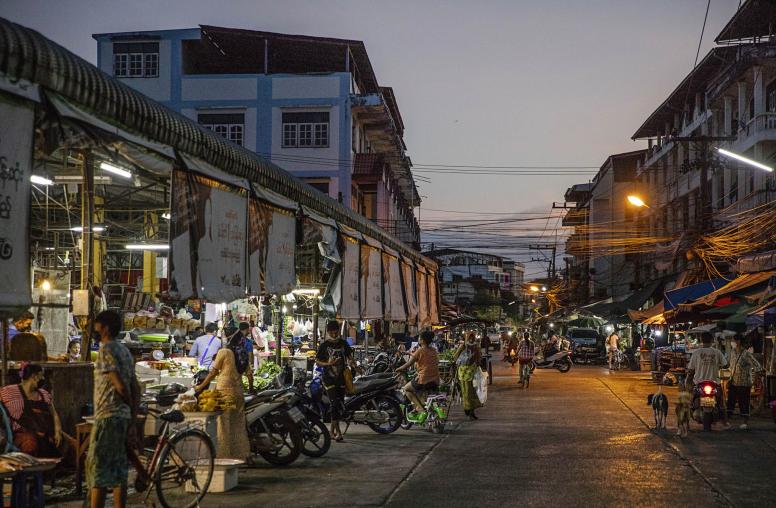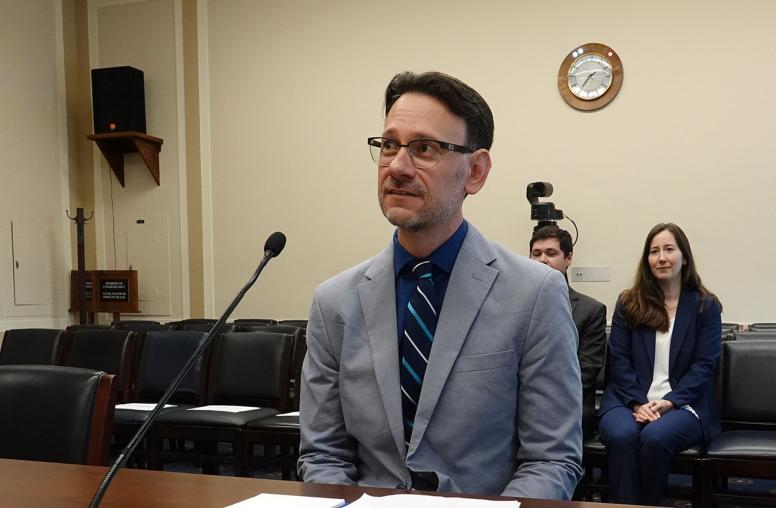Research & Analysis
U.S. Institute of Peace’s articles, reports, tools and other features provide policy analysis, research findings, and practitioner guides. These publications examine critical conflict issues at the center of the Institute’s work to prevent and resolve violent conflict.
The views expressed in these publications are those of the author(s).

How to Support People with Disabilities in War-Impacted Regions of Laos
Much of the postwar focus in the Lao People’s Democratic Republic has rightly been on explosive remnants of war (ERWs). These ERWs have continued to kill or maim hundreds of people each year since the Secret War in Laos ended in 1975, disproportionately affecting children and young people.

The Latest on Southeast Asia’s Transnational Cybercrime Crisis
Increasing scrutiny and exposure of global internet scams based in Southeast Asia has sparked fast-moving developments to quash the schemes and countermoves by the organized gangs behind them. Recent months have seen crackdowns, arrests and internet cutoffs by law enforcement agencies and regional governments. Meanwhile, Cambodia and Myanmar continue to be the most egregious havens for criminal operations, while Laos seems to be demonstrating early signs of concern for the impact of organized crime on its sovereignty.

Southeast Asia Web Scams Reach U.S., Setting Off Alarms for Law Enforcement
From their base in ungoverned stretches of Southeast Asia, international criminal networks are prowling the Internet, seeking to defraud victims around the world with sophisticated and psychologically devastating scams. Gangsters operating out of Myanmar, Cambodia and Laos, relying on forced labor, have spread their tentacles through Asia, Africa and Latin America and increasingly within the United States, stripping gullible prey of at least $64 billion annually. Clearly, to eradicate such a global menace will require a coordinated international response. Even so, the United States is not internally powerless to confront this striking example of how conflict and corrupt governance in distant parts of the world can directly threaten Americans’ security and well-being.

Examining the 2024 Annual Trafficking in Persons Report: Progress over Politics
Jason Tower, country director for the Burma program at the U.S. Institute of Peace, testified on July 9, 2024, before the U.S. House Foreign Affairs Committee Subcommittee on Global Health, Global Human Rights and International Organizations’ hearing on “Examining the 2024 Annual Trafficking in Persons Report: Progress over Politics.”

Transnational Crime in Southeast Asia: A Growing Threat to Global Peace and Security
Organized crime is a significant driver of conflict globally. It preys on weak governance, slack law enforcement, and inadequate regulation. It tears at the fabric of societies by empowering and enriching armed actors and fueling violent conflict. In Asia, criminal groups prop up corrupt and dangerous regimes from Myanmar to North Korea, posing a direct threat to regional stability.

How Laos and Other ASEAN Countries Can Leverage U.S.-China Competition
Recent years have witnessed intensifying U.S.-China competition and tensions in both the political and economic spheres, particularly in areas related to technology, global supply chains, infrastructure connectivity, trade and finance. Southeast Asia has become the center of this strategic rivalry. In the region, the Association of Southeast Asia Nations (ASEAN) has positioned itself as the “central” actor in shaping the regional order and positively engaging with external powers. However, ASEAN’s centrality is increasingly challenged by these two major powers, who have deep and complex ties with Southeast Asia. While this competition poses challenges for ASEAN, there are also opportunities for countries like Laos and others in Southeast Asia to leverage in this tense geopolitical moment.

Is the Climate Crisis Leading to ‘Rupture’ in Southeast Asia’s Mekong?
In natural environments and in human societies, pressure for change can build up gradually for years, then suddenly reach a point of no return. Living in the new “Anthropocene” era of climate crisis, people worldwide are increasingly aware of the linkages between ecological, social and political stability. Stress in one of these domains can contribute to a rupture in others. According to human geographer Sango Mahanty, such a rupture is “a dramatic episode of nature-society disruption that is adverse, intense, and ripples across scales” of space and time. In Southeast Asia, one of the most visible instances of rupture is the explosion of dam construction on the Mekong River and its tributaries.

China’s Security Force Posture in Thailand, Laos, and Cambodia
China’s geo-economic influence is empowering the expansion of its security force posture in the Lower Mekong region, which should be of concern to both maritime Southeast Asia and the United States. While Thailand, Laos, and Cambodia—the geographic core of mainland Southeast Asia—are demonstrating resilience and sustaining some strategic autonomy, several trends indicate that their options may be increasingly limited. This report looks at China’s security force posture in these nations, the possible ramifications of that posture, and considerations for balancing U.S. policy and outreach.